My last post about nuts generated some buzz within the family. My brother Geoffrey from Maryland shipped out the walnut crescent Baci Cookies he had made to his three sisters. Our sister Mary in Maryland received hers first, sister Helen in Vermont a few days later. Out here in Wyoming, the little package didn’t arrive until 7 days after he mailed them.
Oddly, each sister called me daily to see if mine had arrived yet and what I thought of them. Hmm. Something is up.
It might be a touch of sibling rivalry. My sisters, Mary and Helen, usually get together to make the cookies. Geoffrey beat them to the punch. Were they jealous? That didn’t seem likely, as I would expect that they felt more relieved to be off that duty.
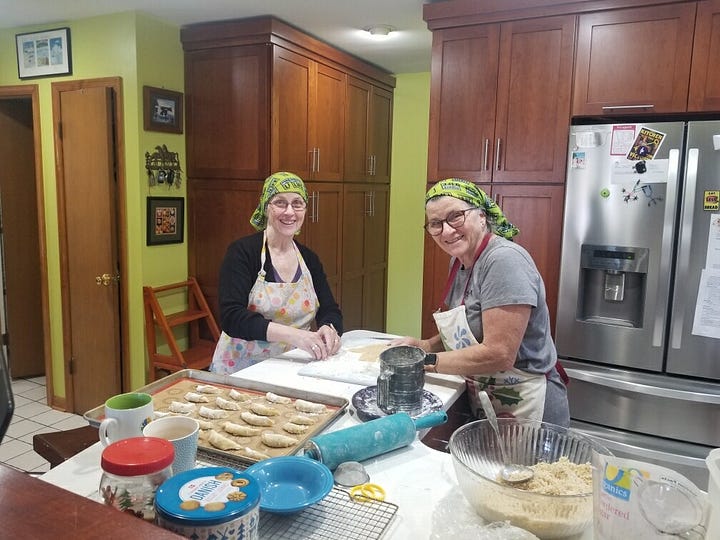
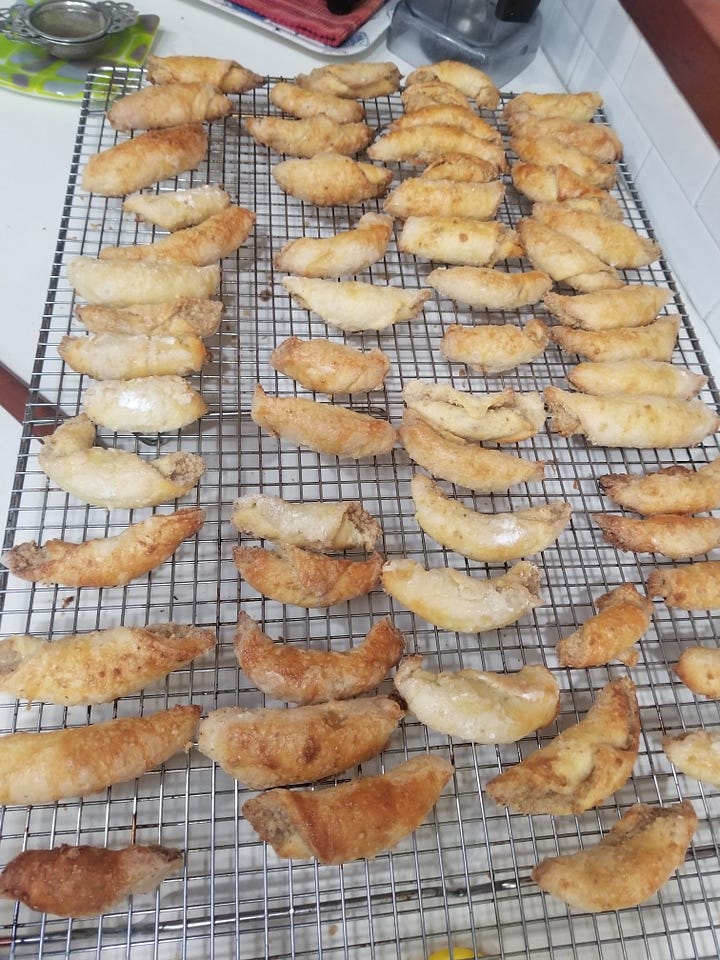
When I opened the package of cookies, I immediately brewed a cup of tea for a tasting. Different. Another bite. A distinctive strong aroma. These were not your typical Baci cookies. Akkk! He used black walnuts!

There are significant differences between black walnuts, Juglans nigra, and English walnuts, Juglans regia. Black walnuts are native to central and eastern North America. They are an essential part of the forest ecosystem, affecting whatever grows around them due to juglone, a chemical released by the tree’s root system that is toxic to nearby germinating plants. Home gardeners carefully limit plantings anywhere near a black walnut tree, as the toxin affects most plants' root and stem systems.
The common walnut originated in Eurasia, where it was known as a Persian walnut. British colonization distributed the nut to the Americas, becoming known as the English walnut. This variety is a lot easier to crack than the native black walnuts, long a staple of the indigenous people who used the nuts in breads, soups, and boiled as a beverage. They also used the husks and bark in medicine, as the black walnut is antimicrobial and antifungal.
The flavor of the black walnut, compared to the common walnut, is distinctive. Some say that it is an acquired taste. The black walnut has an earthy, tannic quality that is very assertive. They have the highest protein level of any tree nut and Vitamin A, iron, minerals, and fiber. Their polyunsaturated fatty acids are antioxidants that help reduce the risk of cancer, diabetes, and heart disease.
Foraged from wild trees, black walnuts are hard from the get-go. Removing them from their green husk is a particularly difficult task, often involving repeatedly running over the green balls with a vehicle. Next, the walnut inside has to dry out to crack and extract the meat, which is much more convoluted than the shell of cultivated common walnuts. It’s a labor of love. But those who love black walnuts are happy to do that. My neighbor BJ used to spend her winter nights cracking the nuts and picking out the nutmeats for her daily oatmeal. I helped her once; then, I learned my lesson.
Common walnuts are cultivated and bred to have thinner, more “crackable” shells, though they are widely available already shelled. They are very easy to add to your diet, in cereals, as a snack, or tossed onto salads at dinner. According to research at UC Davis, the common walnut is rich in ALA alpha-linolenic acid, an omega-3 fatty acid that is anti-inflammatory and helps protect the heart. Walnuts also improve cognitive function and boost the gut microbiome to improve digestive health. Add in lowering your risk for certain cancers and you have a superfood.
So, how did my brother’s nut cookies compare? I must admit that I like the version made with common walnuts better. The richer black walnuts overwhelmed the little cookie, and though they might be healthier, they were not the taste I was accustomed to. I called my cousin Barbie in Ohio to ask if she thought Baci used black walnuts in her cookies and breads. “Oh no,” she said, “she wouldn’t have done that. There were black walnut trees all around the property, but she bought bags of walnuts in the shell. The black walnut taste is too strong.”
There you have it. Geoffrey purchased black walnuts to make the cookies because he wanted more “walnut” flavor. The other sisters agree that they will have to take the task back in the future. These did not cut it for them.
While I had my bro on the phone, I asked him if he had Baci’s Nut Roll recipe, and he sent it to me.
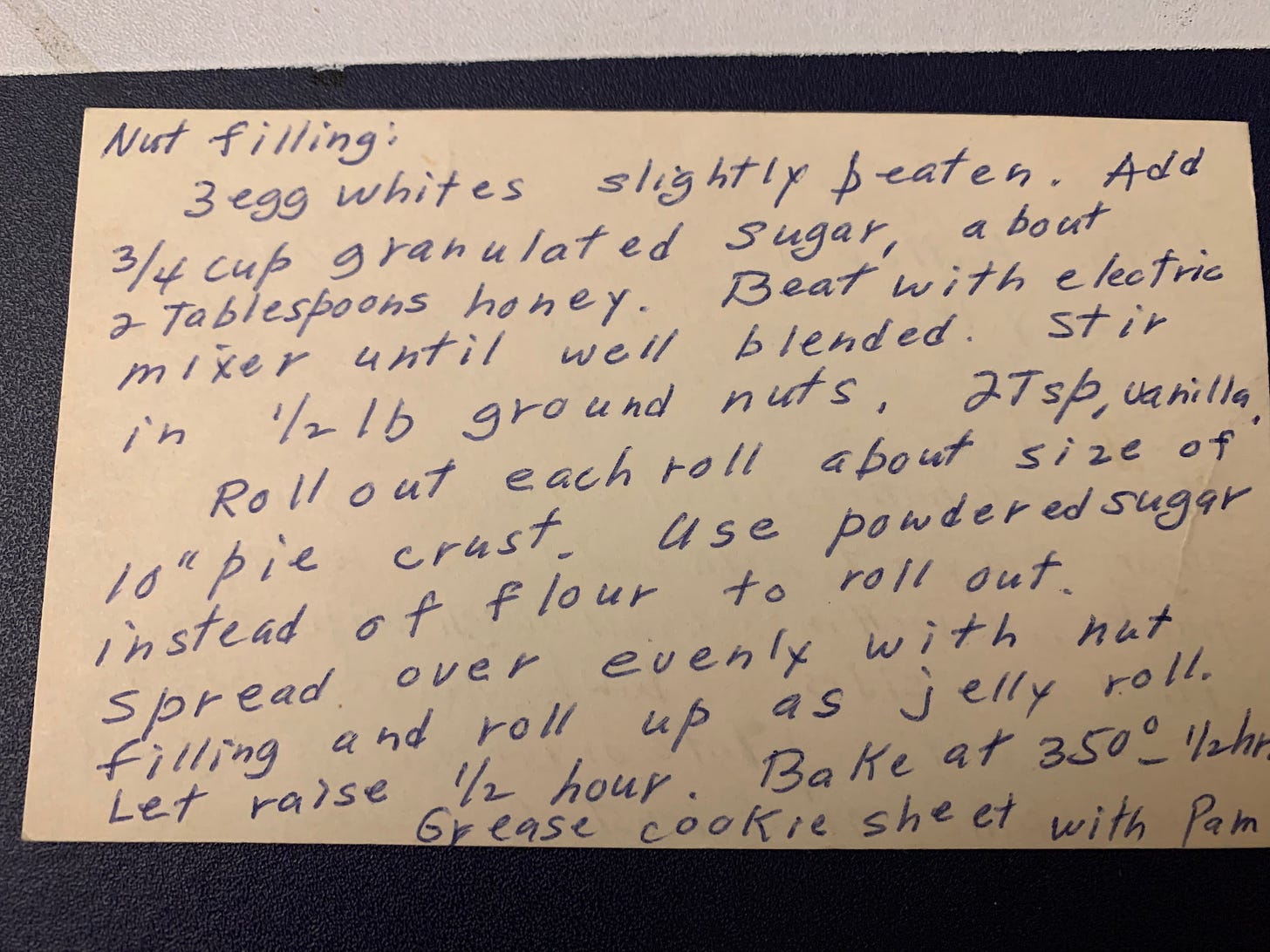
That is something that I have been working to master for about 30 years. I’m close, but still, it’s not what I remember. Baci’s was more a bread than a dessert, though the nut filling was sweet. Why didn’t I pay more attention in that kitchen in Ohio that smelled faintly of coal ash? I was a kid. And why didn’t she write it down? If she had, it would have been in Polish. I’m left to muddle through. But the first batch of four Nut Rolls was very good, though they split and the filling oozed. I’m still learning. It’s just hard when you have to teach yourself.
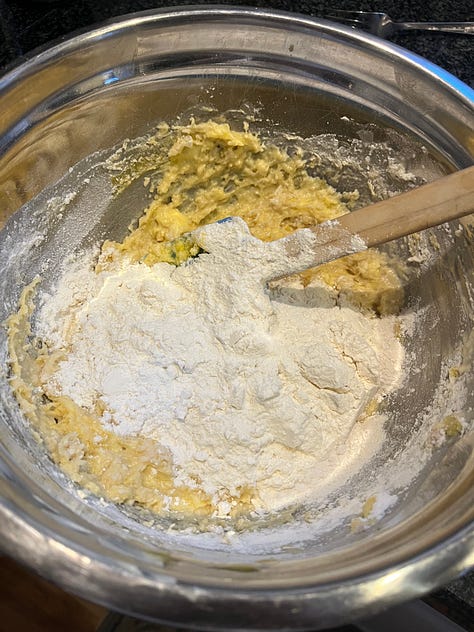
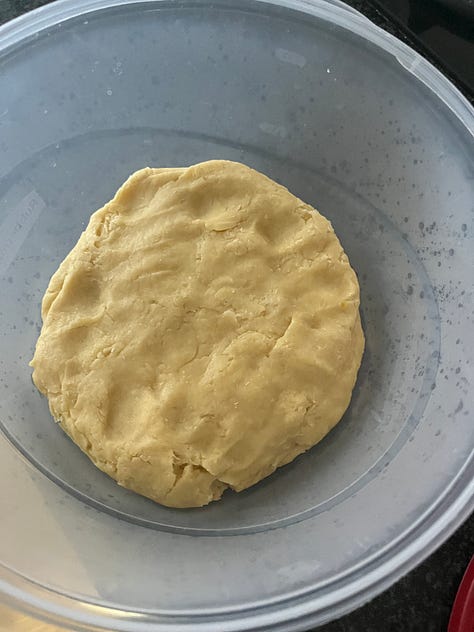
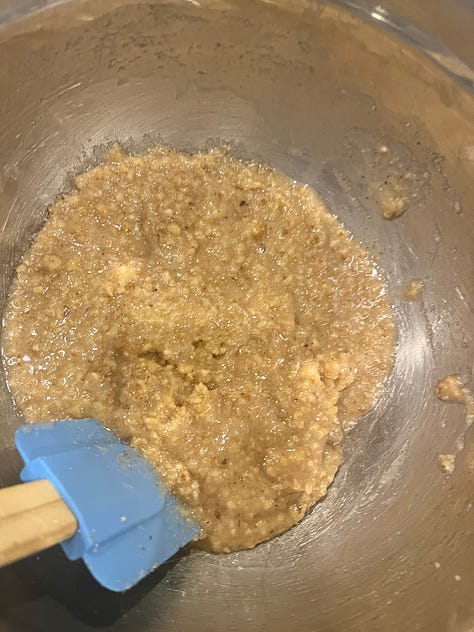
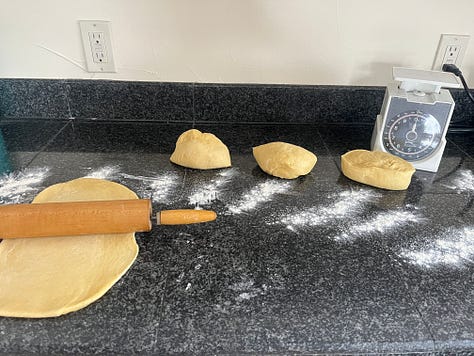
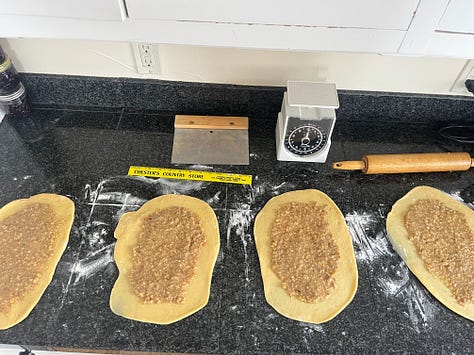
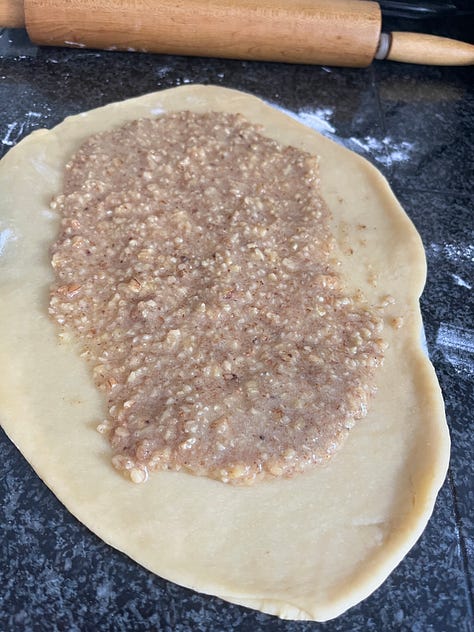
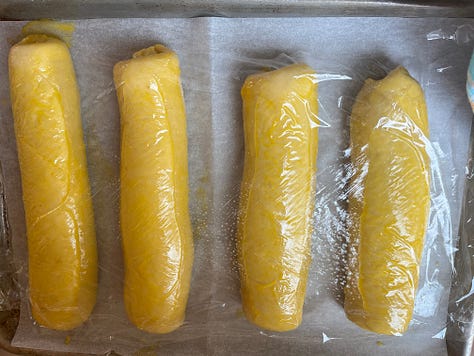
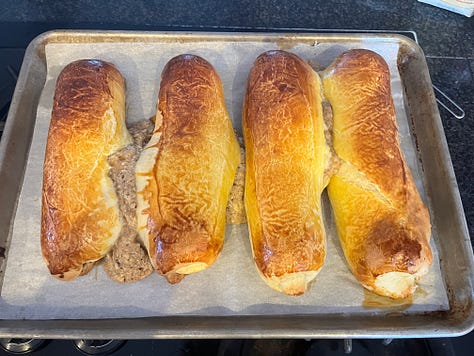

At least we are eating lots of walnuts and getting those health benefits. Who cares about the calories? Not Iris!



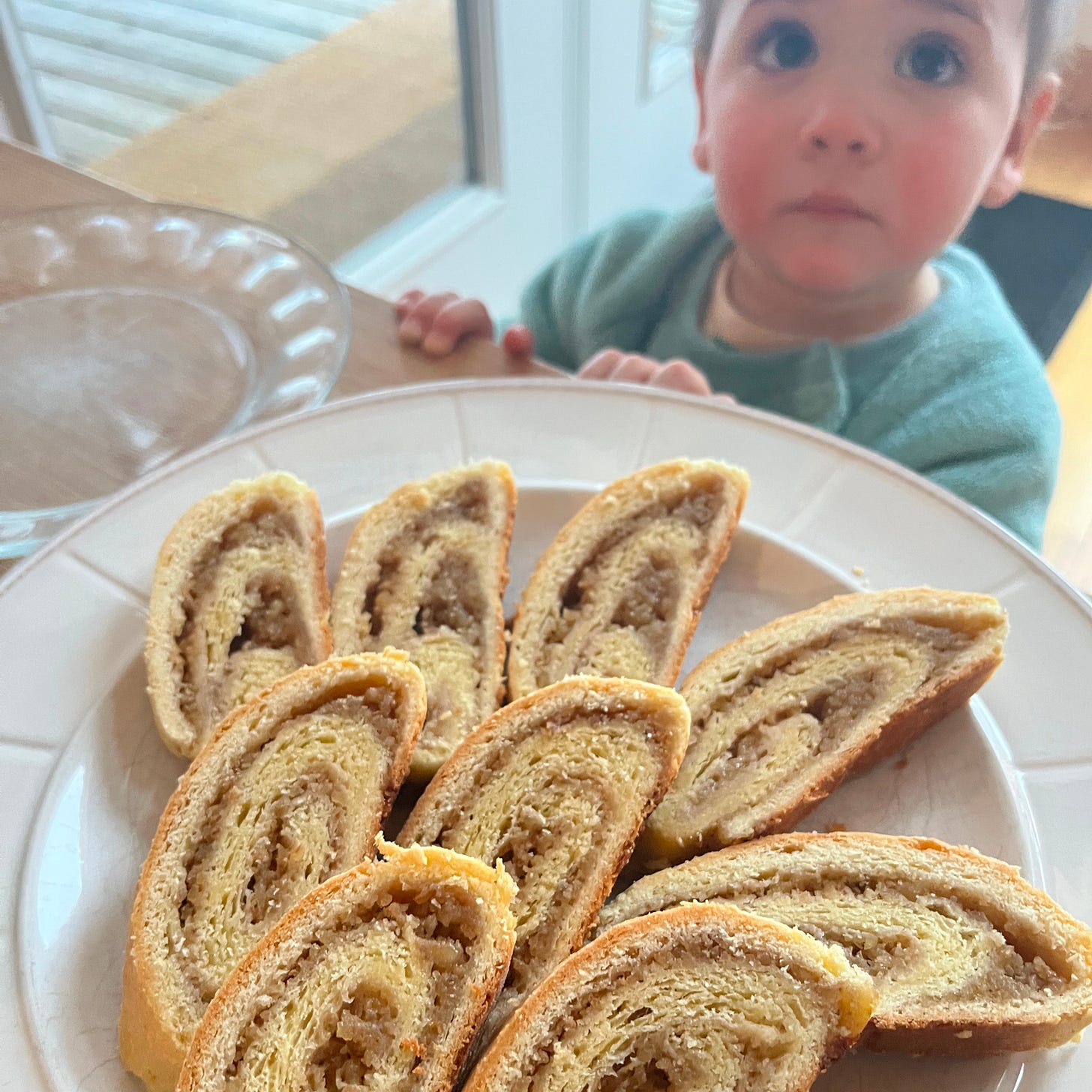

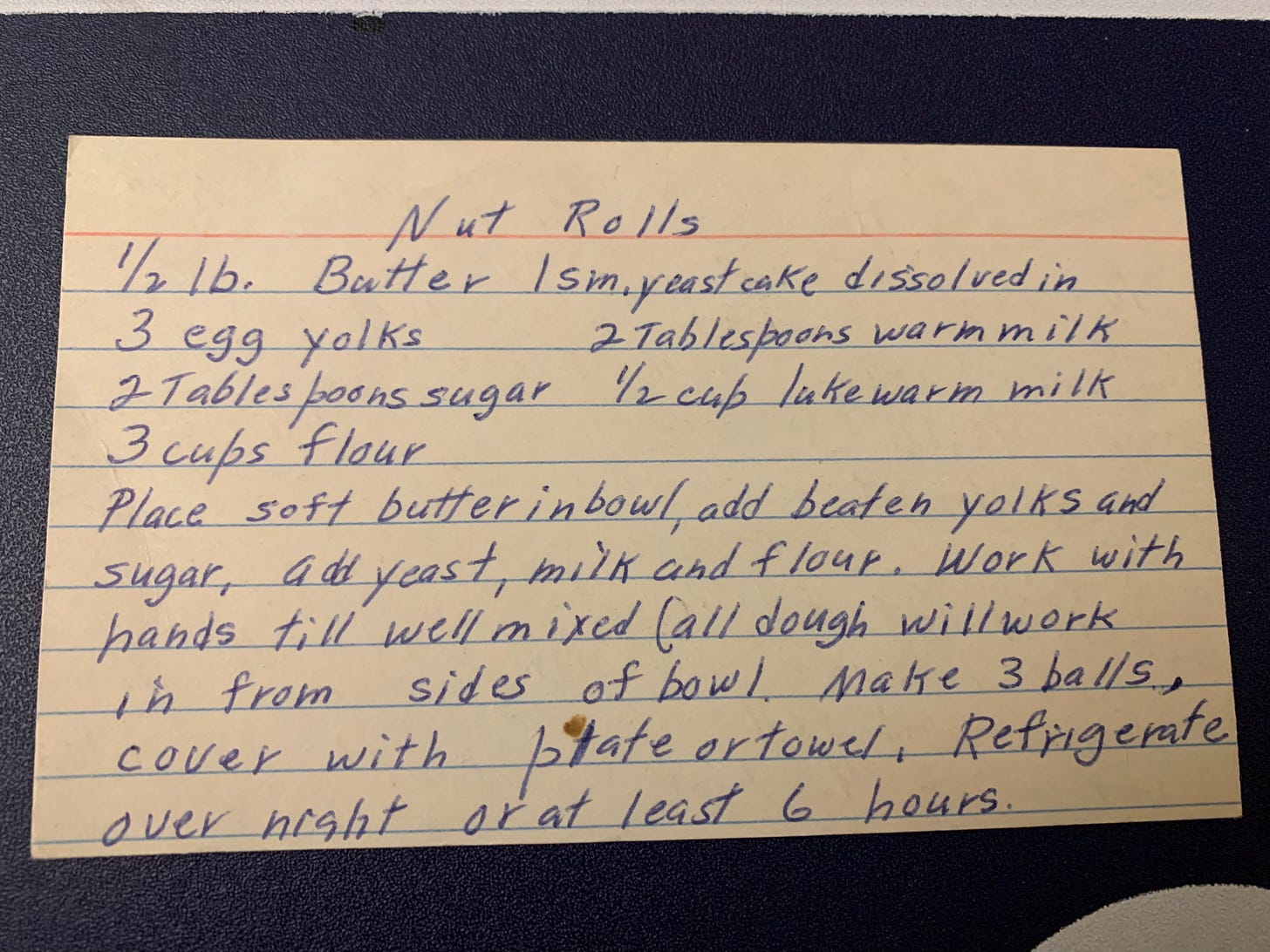

You should try it! Not hard at all. I’d like to try it with poppy seed filling.
Thanks for your comment and Happy Holidays🎄
Send them black walnut cookies to Miami, we ain't picky.